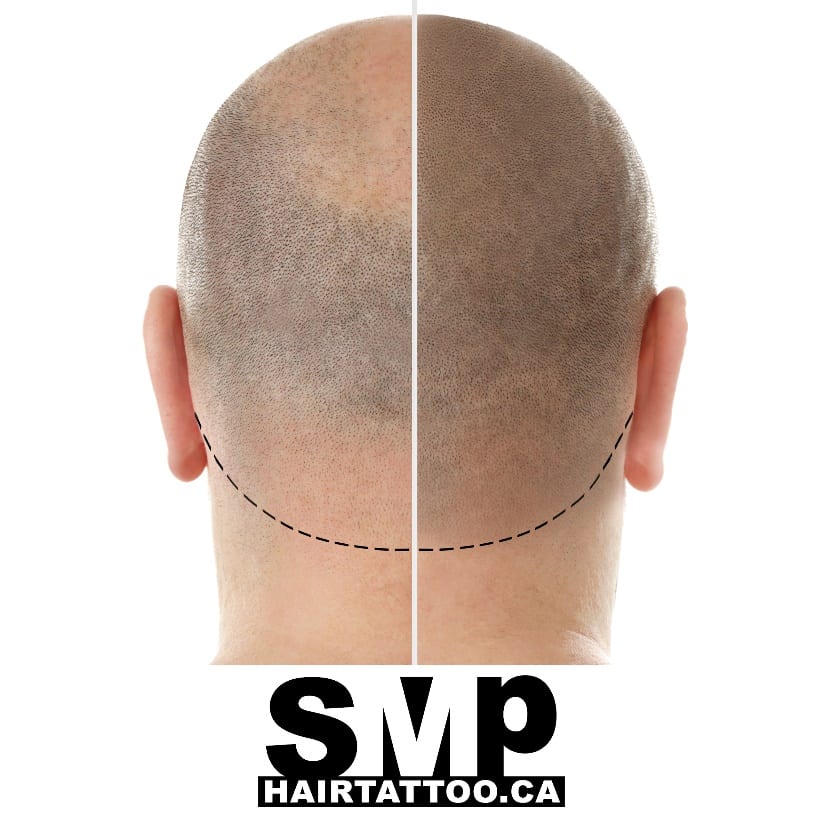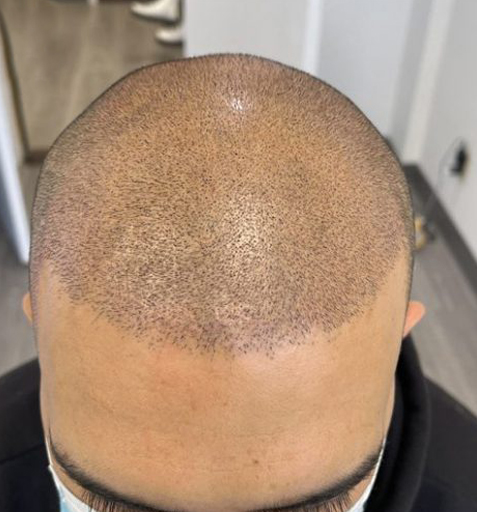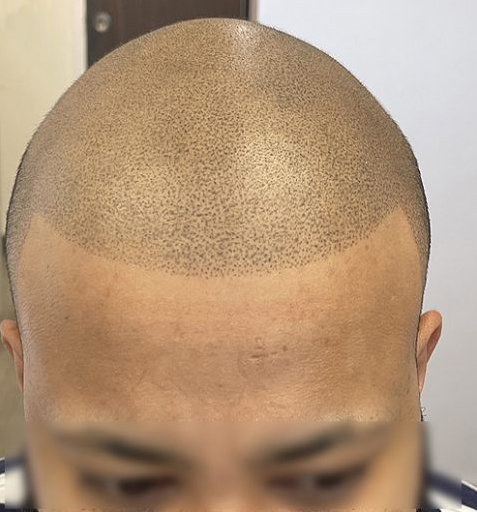
Table of Contents
Scalp Hair Micropigmentation is a cosmetic procedure designed to help people who face hair loss. It works by applying tiny pigment dots to the scalp, which resemble natural hair follicles. These dots create the illusion of thicker and denser hair. The treatment can be a great option for those looking to boost their appearance without undergoing surgery.
People often wonder if SMP will be noticeable to others. You might worry that the results could stand out in an obvious way. However, the outcome depends on several factors. The skill of the technician and the color choice of the pigment both play an important role in how natural the results look.
In this article, we will explore what affects how natural SMP looks and if others will notice it.
Table of Contents
Micro Scalp Pigmentation is a non-surgical procedure. It uses specialized tattooing techniques to apply pigment to the scalp. The tiny dots created by this process resemble the appearance of hair follicles. This gives the scalp the look of a shaved or closely cropped head of hair. SMP is popular among people dealing with thinning hair, receding hairlines, or baldness.
SMP does not require incisions or grafts. This makes it a less invasive procedure compared to traditional hair transplants. The results are often immediate. SMP can be customized to match different hair colours and types. It creates a natural-looking result that can help boost confidence.
Several factors can affect how noticeable your SMP will be. These factors include:
Your hair type and density will influence how noticeable SMP looks. If your hair is fine or sparse, the contrast between your natural hair and the pigment might be more obvious. This is especially true if the SMP is not applied carefully. People with thicker or coarser hair may find that SMP blends better. Keeping the hair short or shaved helps the result look more natural.
For SMP to look natural, the pigment must match your scalp and natural hair color. If the pigment is too light or too dark, the result will contrast with your skin or existing hair. This contrast makes the procedure more noticeable. A skilled practitioner will select a pigment that matches your natural tone. The right pigment makes the dots blend seamlessly with your scalp.
The skill of the practitioner plays a significant role in the final result. An experienced technician will know how to apply the pigment evenly and mimic natural hair growth patterns. They will avoid harsh lines or uneven spacing. If the practitioner lacks experience, the dots might look uneven or blotchy. It is important to choose a skilled professional for the best outcome.
The condition of your scalp will also impact the appearance of the SMP. People with darker skin tones or smooth, light scalps may see different results compared to those with lighter or textured scalps. Those with oily or sensitive skin may experience fading or unevenness if they do not take proper care of their scalp. A shiny or reflective scalp can make the pigment dots more visible. Keeping the scalp healthy helps maintain a natural look.
When applied correctly, SMP looks incredibly natural. It mimics short, cropped hair, often blending smoothly with your natural hairline. Many people find that SMP is nearly impossible to detect, especially if they keep their hair short or shaved.
SMP tends to look best with shorter haircuts. The fine dots blend well with a shaved head, giving a fuller look. If you have longer hair, the dots may be more noticeable, especially if the hair is styled in a way that exposes the scalp.
SMP may not be ideal for people who want to grow their hair long. As the hair length increases, the dots could stand out more. However, some individuals with longer hair choose SMP to fill in thinning spots. With the right technique, it can still appear natural.
Though SMP is designed to be discreet, there are certain situations where it might become noticeable. These include:
Compared to other hair loss treatments, SMP can be more subtle. Unlike hair transplants, which involve surgery and healing time, SMP is non-invasive. It does not require recovery time or risk of scarring. Unlike wigs, which can look artificial, SMP provides a low-maintenance and permanent solution.
It can be helpful to compare SMP with other hair restoration treatments to understand how noticeable it is.
Is scalp hair micropigmentation noticeable? The answer depends on several factors, such as your hair type, scalp condition, the practitioner’s skill, and aftercare. When done correctly, SMP can provide a natural and subtle appearance, especially for those who prefer short, buzzed hairstyles. However, poor pigment matching or uneven application can make it more noticeable.
SMP is an effective solution for hair loss. It creates a natural-looking result when done by an experienced practitioner. By setting realistic expectations and following proper care instructions, you can achieve a fuller-looking scalp that remains undetectable to others.
If you are considering SMP, consult a trusted specialist to discuss your needs. This will help you achieve the most natural results possible.
Is scalp micropigmentation painful?
Most people find the procedure tolerable. The feeling is often described as mild scratching or light pressure. You might experience discomfort in sensitive areas like the temples or crown. Practitioners use numbing creams to reduce any pain.
How long does SMP last?
SMP can last anywhere from 4 to 8 years. The duration depends on your skin type, sun exposure, and aftercare. Over time, the color may fade slightly, but it does not disappear completely. You can always get a touch-up session to refresh the look.
Can I go for SMP if I have existing hair?
Yes, SMP works well for people who have thinning hair. It fills in thinning areas and enhances the overall look. You will get a fuller, even appearance, especially if you prefer a buzz cut or shaved head.
Does scalp hair micropigmentation fade over time?
Yes, SMP fades a little over time. This process is slow. The pigment’s intensity decreases gradually. However, the dots do not fade unevenly. You will need touch-ups to maintain the look, but fading does not ruin the results.
Can I shave my head after getting SMP?
You can shave your head anytime. SMP looks best with a shaved or closely cropped hairstyle. The micropigmented dots mimic the look of natural hair follicles. You will enjoy a fuller, more even look with a short hairstyle.
Can I still grow my hair out after getting SMP?
SMP works best for shorter hair. Long hair might expose the dots more. The look can be less natural as the hair grows out. You should discuss your future plans with the practitioner. They will help you choose the best approach based on your hairstyle preferences.
Is SMP a permanent solution for hair loss?
SMP is not a permanent cure. It cannot restore natural hair growth. The procedure creates the appearance of fuller hair. It is a cosmetic treatment, not a medical solution. You will need touch-ups to keep the look fresh.
Can SMP be done on people with scalp conditions or sensitive skin?
SMP can be done for most people, even those with sensitive skin. However, people with certain scalp conditions may need to consult a dermatologist first. If you have eczema or other severe conditions, it is better to get advice from a professional. A patch test can help rule out any reactions to the pigment.
Will anyone be able to tell I had SMP?
If done correctly, SMP should look completely natural. The dots will blend into your natural hairline. People will most likely not notice that you had the procedure. Choosing a skilled practitioner will make a big difference in the results.
How much does scalp micropigmentation cost?
The cost of SMP varies. It can range from $1,500 to $4,000. The final price depends on the area treated and the experience of the practitioner. Smaller areas or touch-up sessions tend to cost less. You should consult your practitioner to get an accurate quote.







© 2024 HAIRTATTOO.CA | Scalp Micropigmentation & Trichology Centre
